A government decree passed on November 30 may usher in a new era in the reconstruction of domes and ornaments lost during the second world war, or the following reconstruction. The pilot project will see the ornamental roofs of three buildings recreated. The building under 4 Vécsey Street – 2 Vértanúk Square – 31 Nádor Street, the central building o Eötvös Loránd University on 1–3 Egyetem Square, and 4 Gellért Square, used by the Budapest University of Technology and Economics.
As the government intends to support the restoration of all roof ornaments and domes which had a significant effect on cityscapes (following an official register, the creation of which is the first step of the programme), PestBuda collected 10 buildings in Budapest which, due to their location and of course their beauty, deserve to have their ornaments reinstated.
1. The onion dome of Takáts House near Erzsébet Bridge
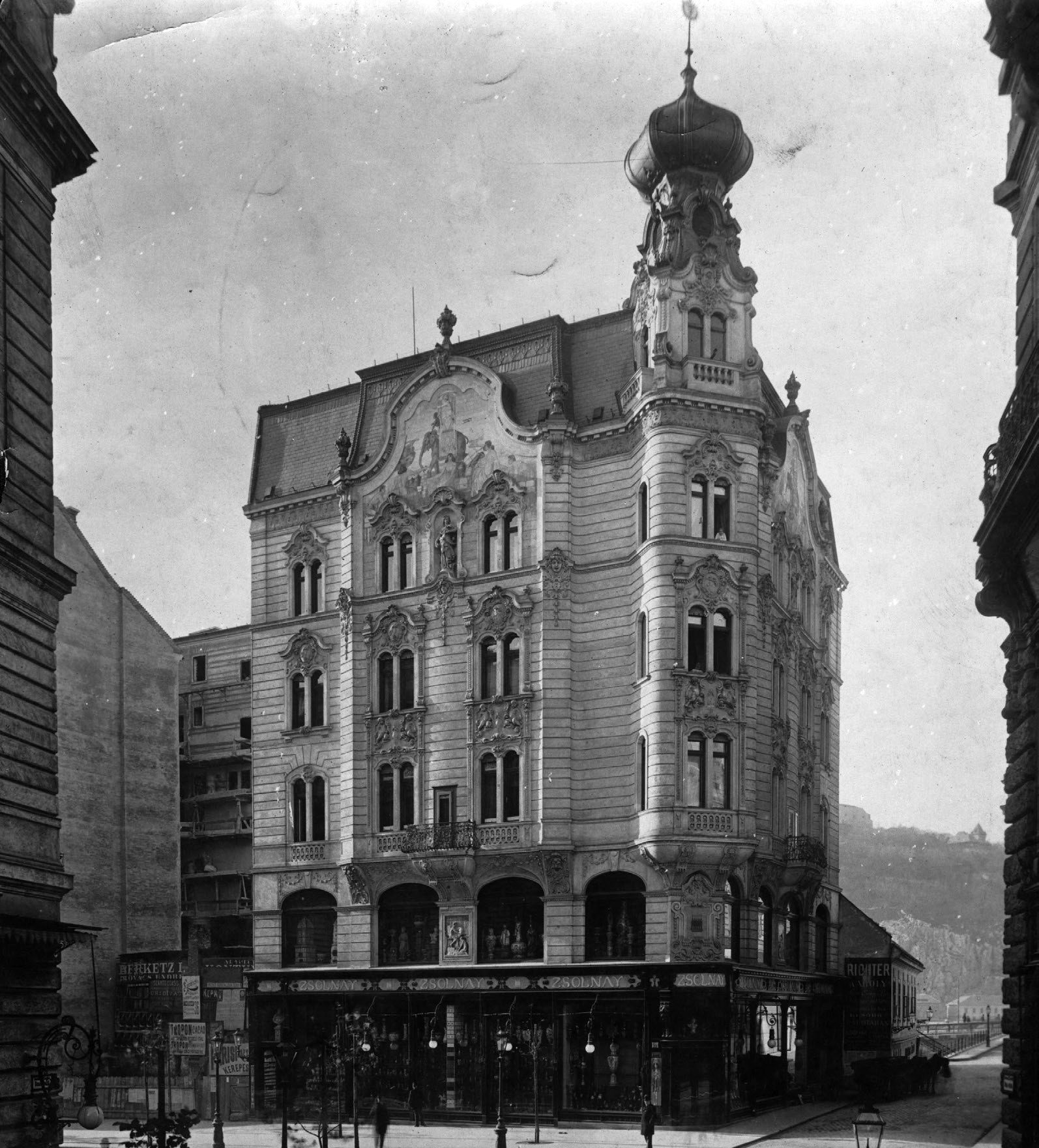 The facade of Takáts House as seen from Váci Street at the beginning of the 1900s
The facade of Takáts House as seen from Váci Street at the beginning of the 1900s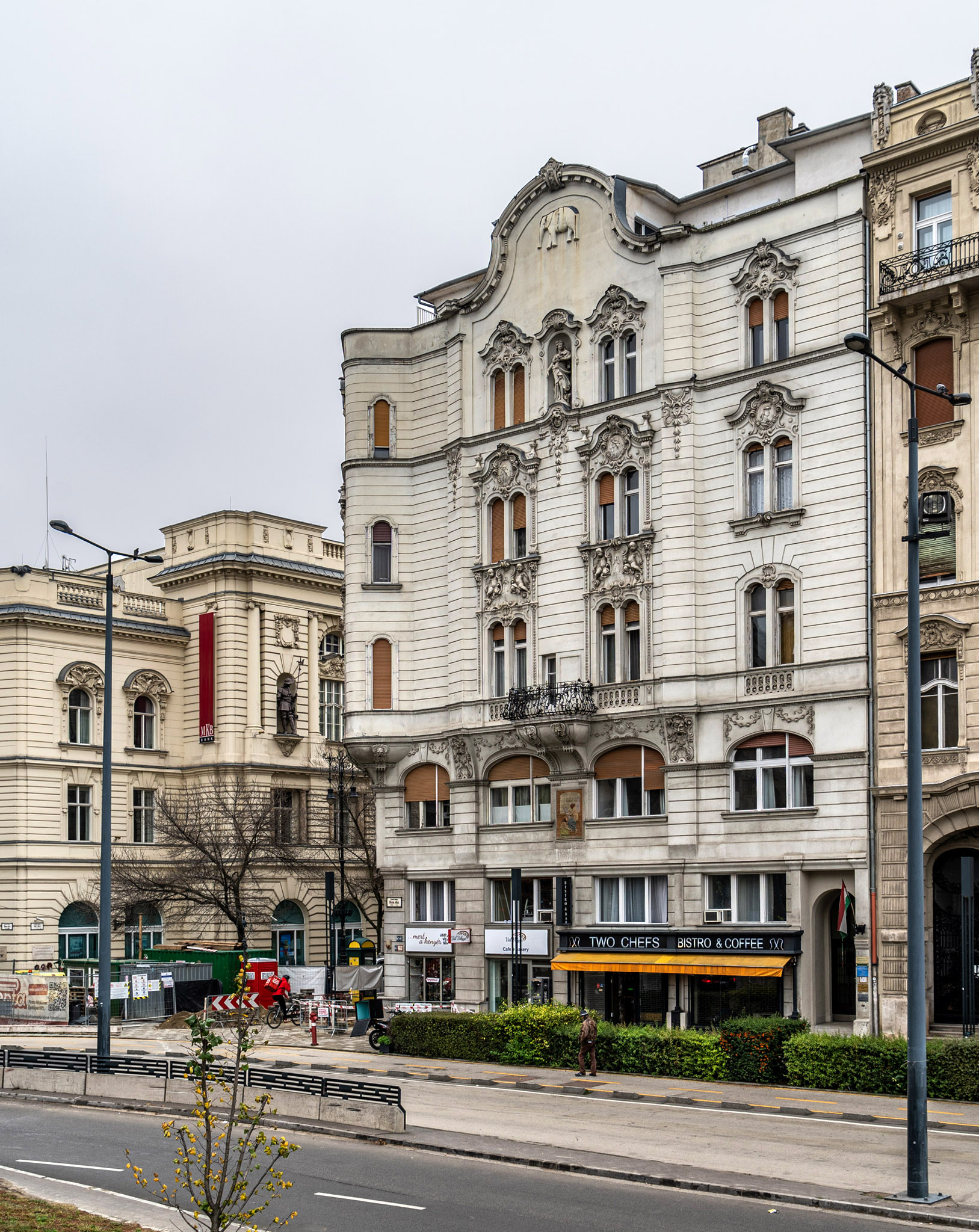
Takáts House today, seen from Március 15 Square (Photo: Balázs Both/pestbuda.hu)
Despite its central location on the corner of 3 Duna Street and 39 Váci Street on Március 15 Square, few know that a fantastic onion dome once decorated its roof. Probably designed by Gyula Schwieger for the spice grocer János Takáts in 1899–1900 the ground floor and mezzanine of the building once housed the Budapest offices of the Zsolnay factory. The reliefs on the exterior, displaying the phases of ceramics production and the logo of the company are memoirs of this period. Word war 2 brought an end to the iconic dome of the building. While the house was renovated in 2003, its roof ornaments are sorely missing and would add some spice to the cityscape.
2. Reaching for the heavens: Fonciére Palace on Andrássy Avenue
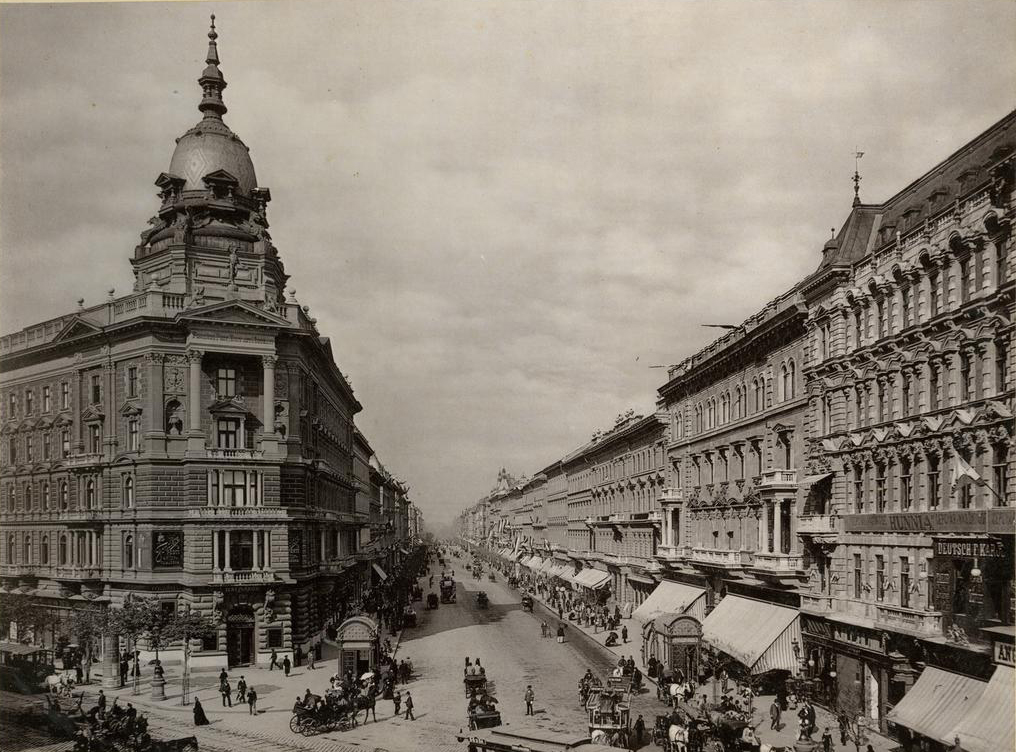 Fonciére Palace at the beginning of Andrássy Avenue in the 1890s (Photo: FSZEK Budapest Collection)
Fonciére Palace at the beginning of Andrássy Avenue in the 1890s (Photo: FSZEK Budapest Collection)
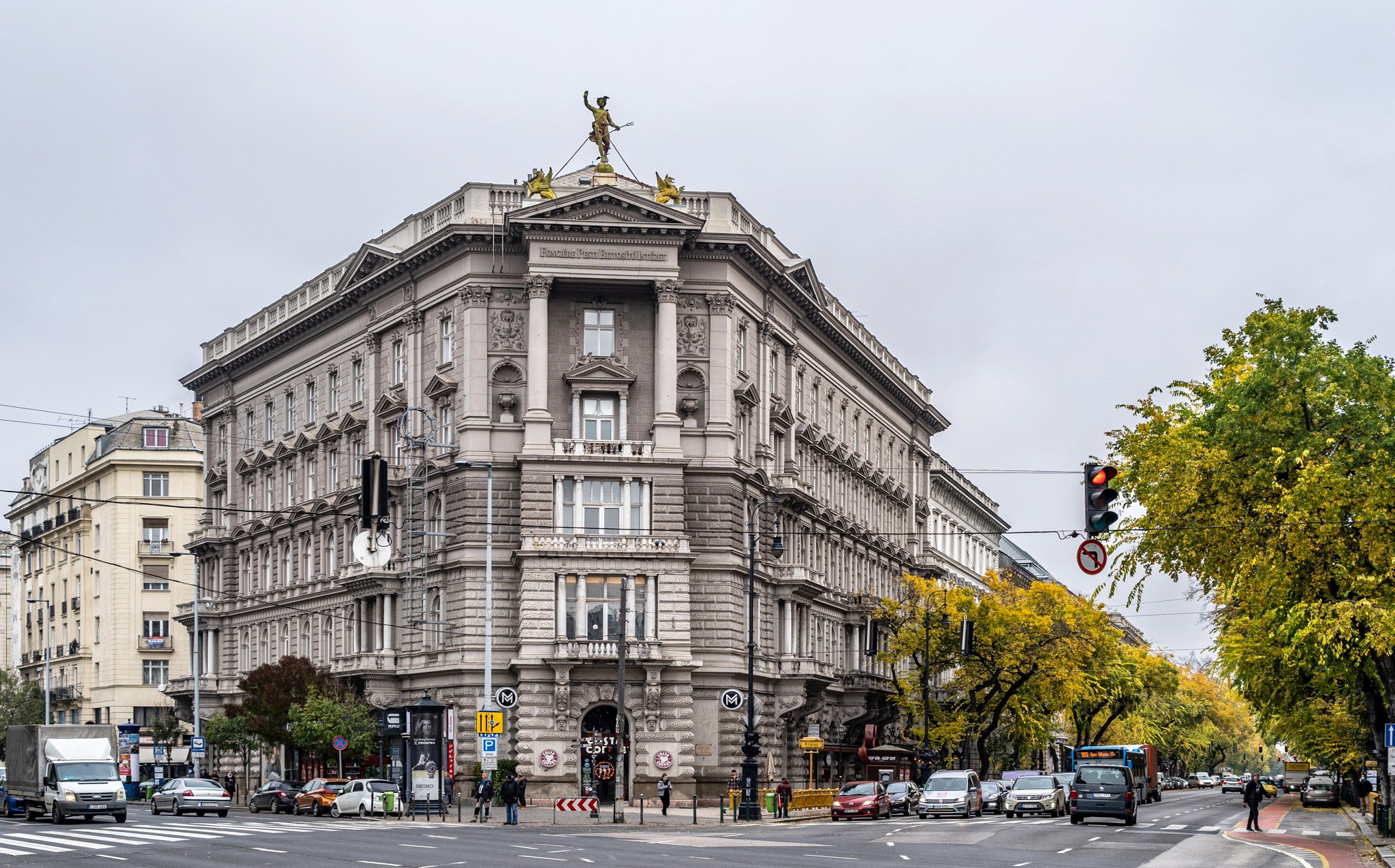
The Fonciére Palace today. The statue of Hermes (Mercury) and the griffins in their rightful places but missing a dome (Photo: Balázs Both/pestbuda.hu)
The Fonciére palace at 2 Andrássy Avenue is a well-known sight to anyone who has visited the beginning of the avenue. On the corner plot shared with Bajcsy-Zsilinszky Road, the renaissance revival building was designed by Adolf Feszty (brother of the famous painter, Árpád Feszty) and built-in 1882. Originally, a huge pointed corner dome stood atop the building but was destroyed in the Second World War. Statues of Mercury and two griffins decorate a ledge before where the roof ornaments one stood, these were lowered from their place in October 1979 and restored. They were put back in place in 1980. We believe that the roof ornaments also deserve to be rebuilt.
3. The Stein Palace deserves restoration, not a destructive loft conversion
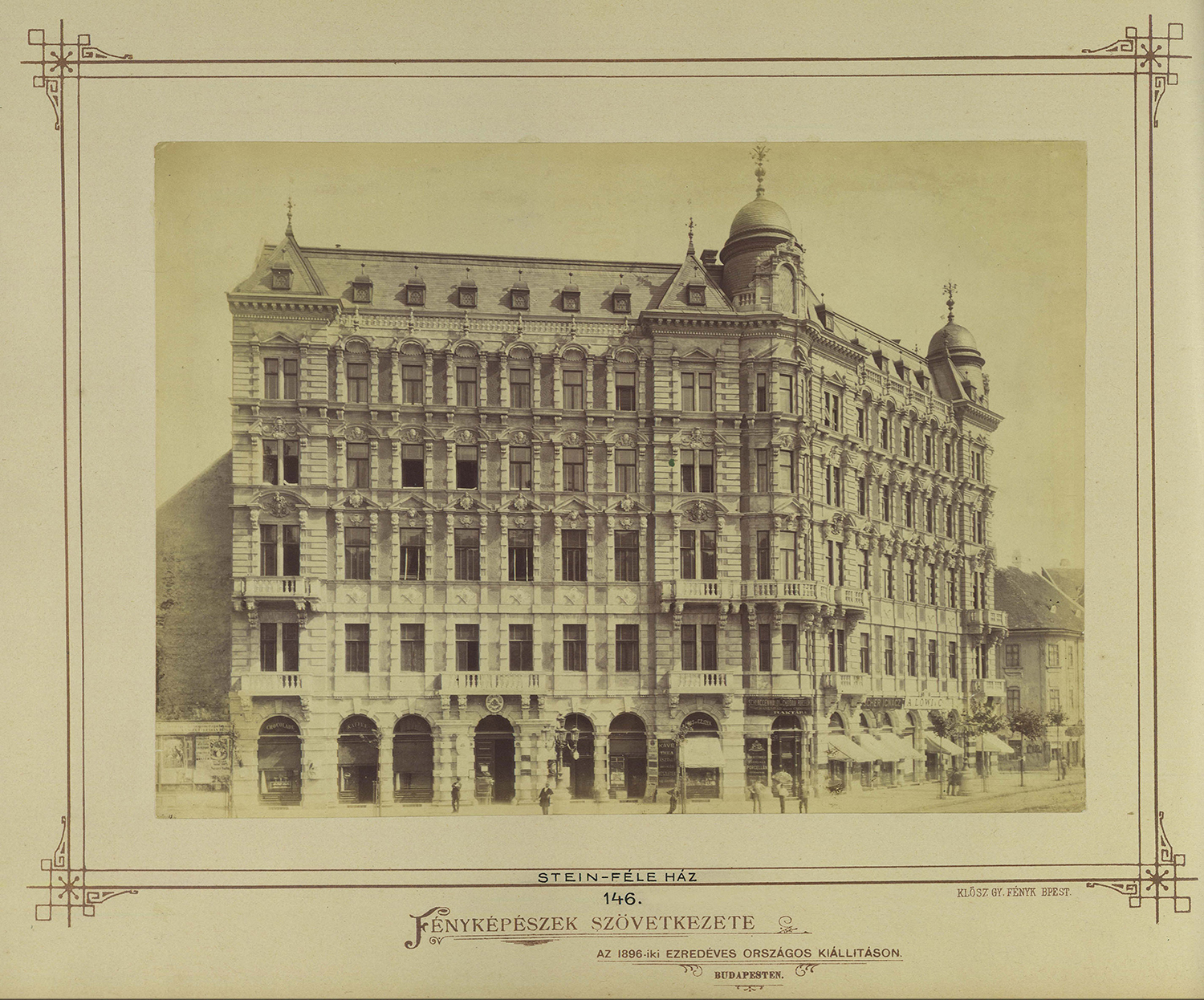 1 Andrássy Avenue, the Stein Palace, around 1883, photographed by György Klösz (Photo: Fortepan / Budapest Archives. Reference No.: HU.BFL.XV.19.d.1.05.160/No.: 82215)
1 Andrássy Avenue, the Stein Palace, around 1883, photographed by György Klösz (Photo: Fortepan / Budapest Archives. Reference No.: HU.BFL.XV.19.d.1.05.160/No.: 82215)
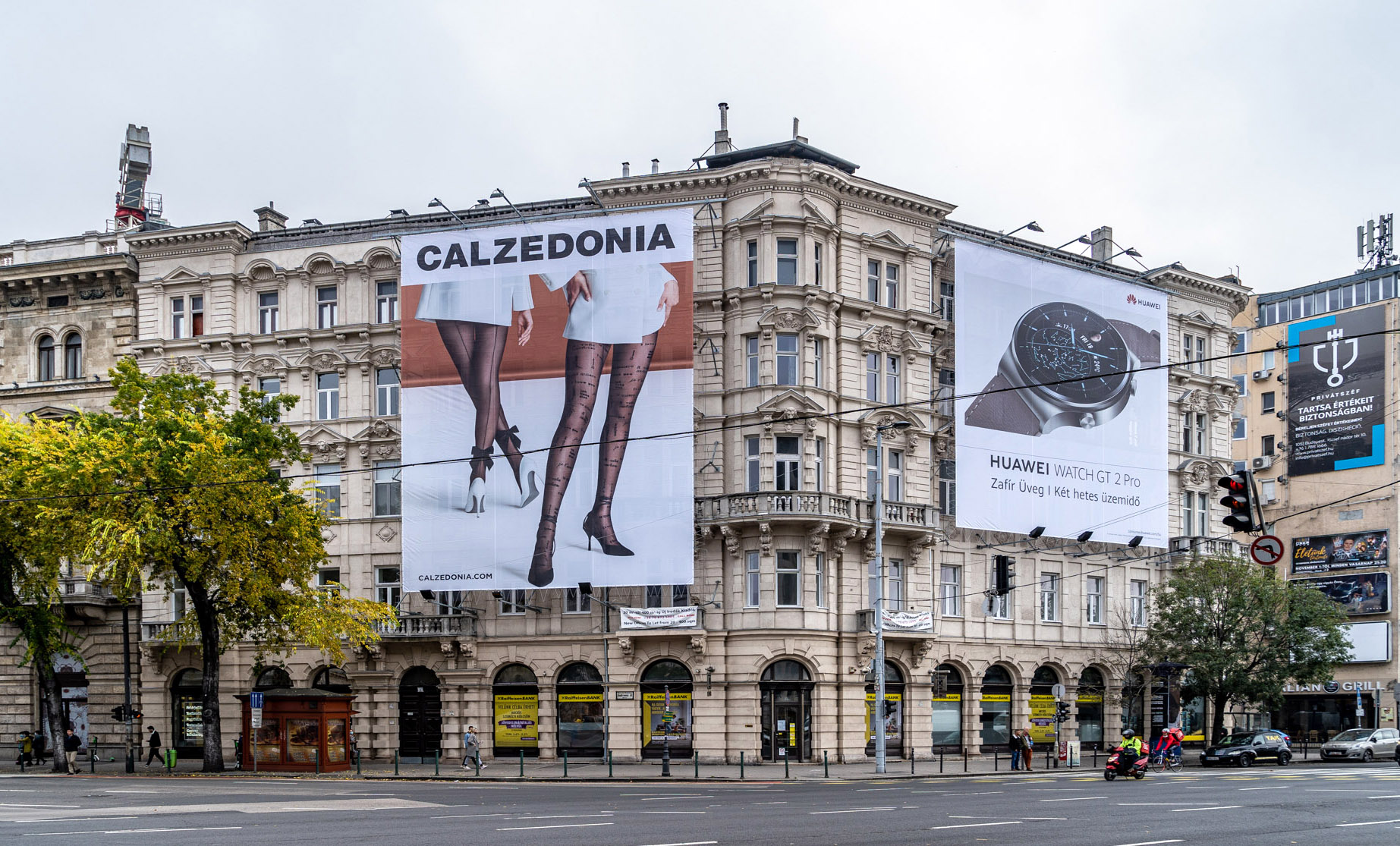
The Stein Palace today. Huge posters, no roof decorations (Photo: Balázs Both/pestbuda.hu)
After imagining the renovation of one of the houses that serve as the entrance to Andrássy Avenue, then symmetry demands that we continue with the roof ornaments of the opposite building. Built around 1882, according to plans by Adolf Lang, the Stein Palace was never adorned with a stunning dome, but its original roof was more ornate the current design. Its frontage on Bajcsy-Zsilinszky Road was decorated with two smaller domes. A portion of the roof ornaments and the foundations of the domes were visible until the early 2000s. However, they were lost to a barbaric demolition and the lengthy legal and financial battle that ensued.
4. Art Nouveau tower on Deák Square
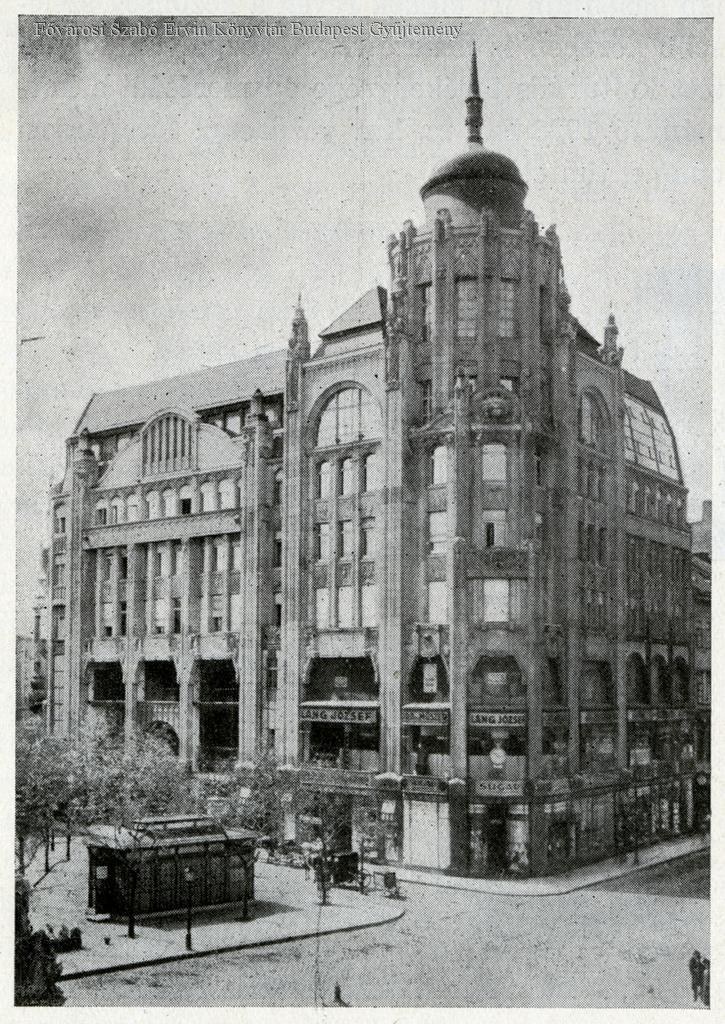
The Modern and Breitner Department Store on Deák Square with a dome (Source: FSZEK Budapest Collection)
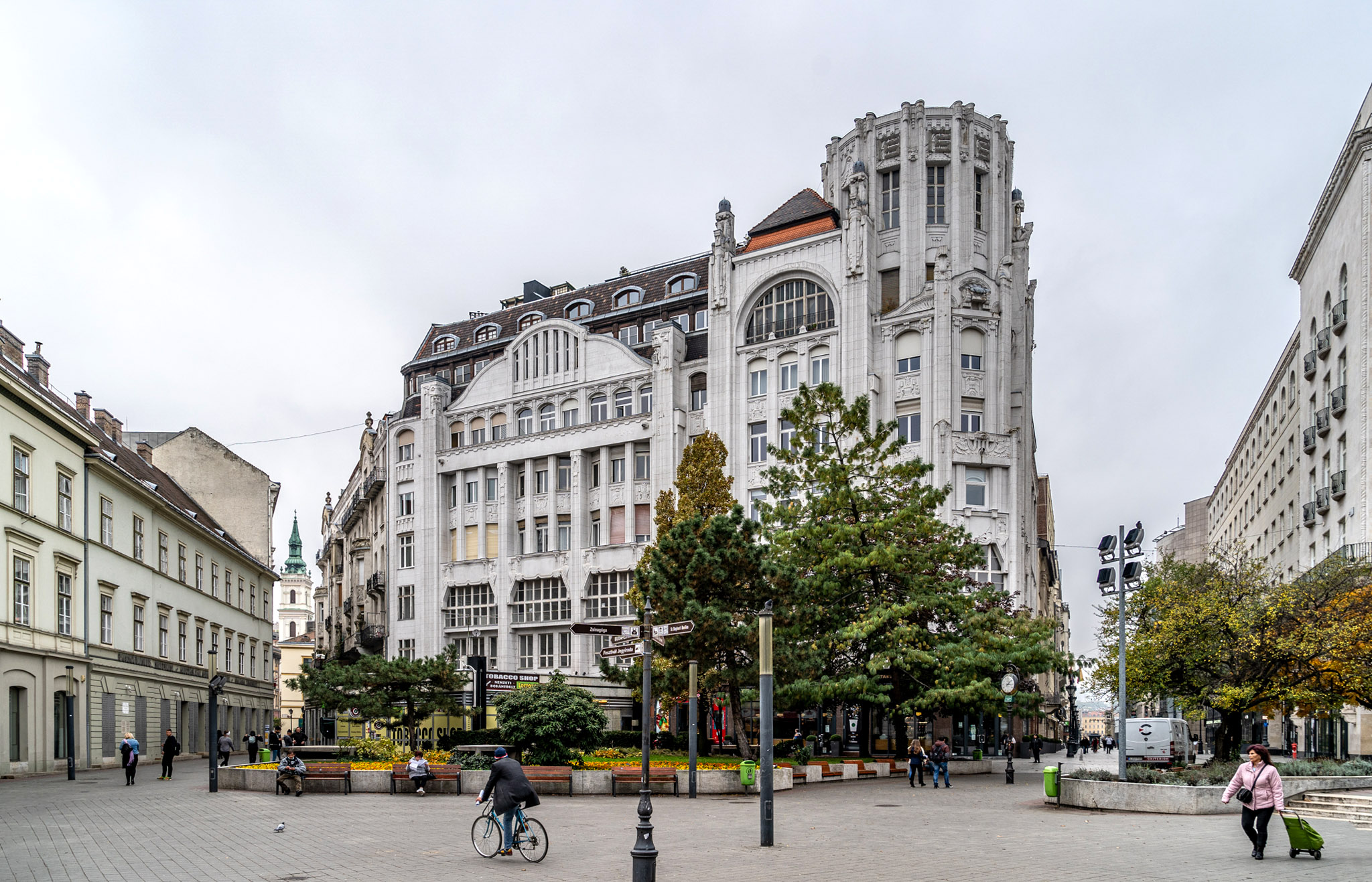
The buildings today, sans dome (Photo: Balázs Both/pestbuda.hu)
One of the most beautiful and characteristic buildings of Deák Ferenc Square is also lacking its dome. The former Modern and Breitner Department Store and residential building under 23 Deák Ferenc Street was completed in 1912. The fabulous Art Nouveau palace, designed by József Kollár and Sámuel Révész, is one of the most beautiful buildings in Budapest, its bastion-like tower is decorated every Christmas. A row of studio flats was once built in the attic of the house. Artists such as the painter Béla Iványi-Grünwald and the tapestry-maker Noémi Ferenczy lived in the building. Looking at the house, however, one quickly realises something is amiss. What looks like a bastion today is actually the tower which once stood under the dome. The house was severely damaged in World War II, and when repaired, its most stunning decoration was never rebuilt.
5. Tower of the Lutheran Church on Deák Square
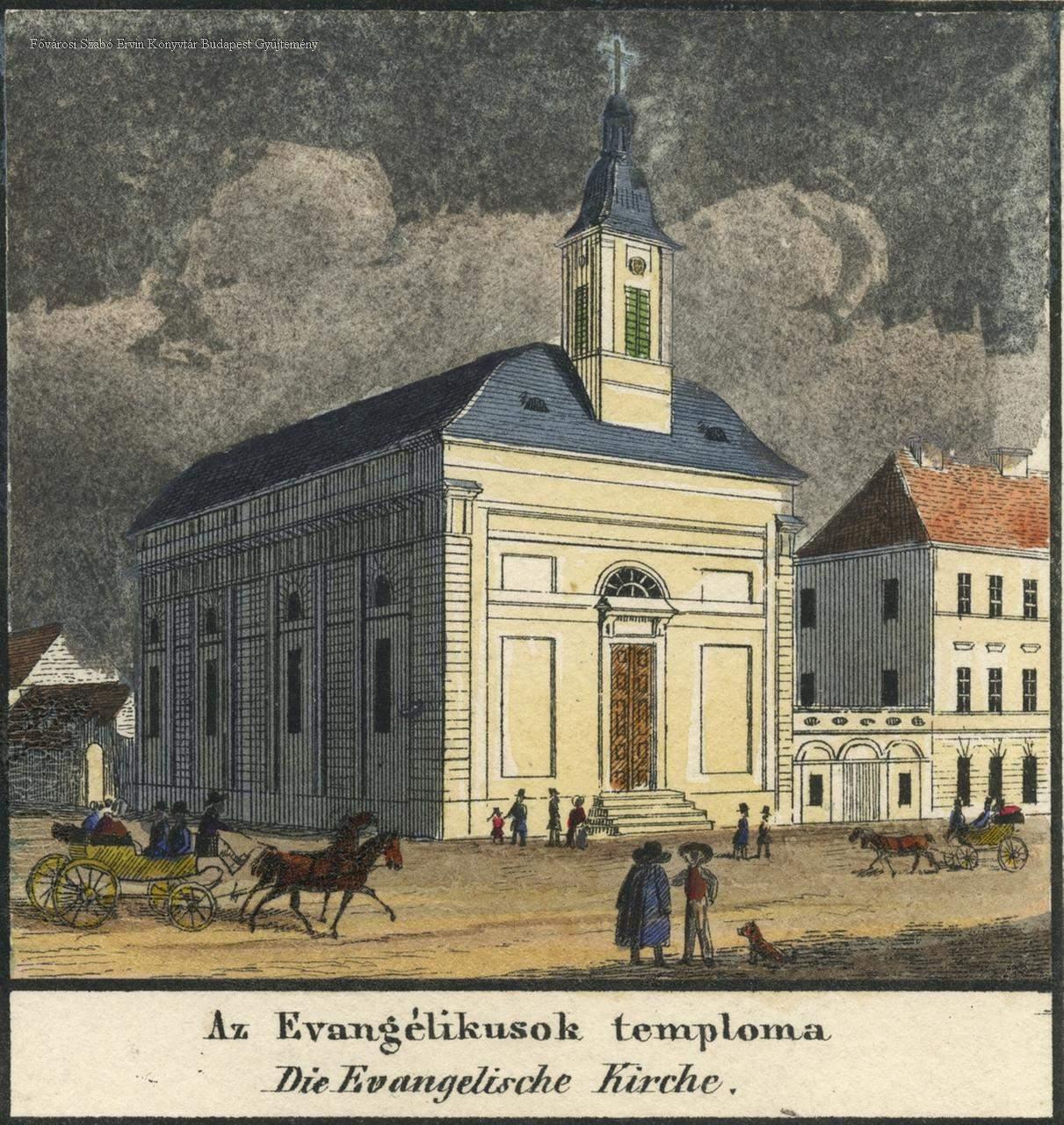
The Lutheran Church on Deák Square is in its original form, with a tower and without the colonnade designed by Hild. Drawing by Carl Vasquez (Source: FSZEK Budapest Collection)
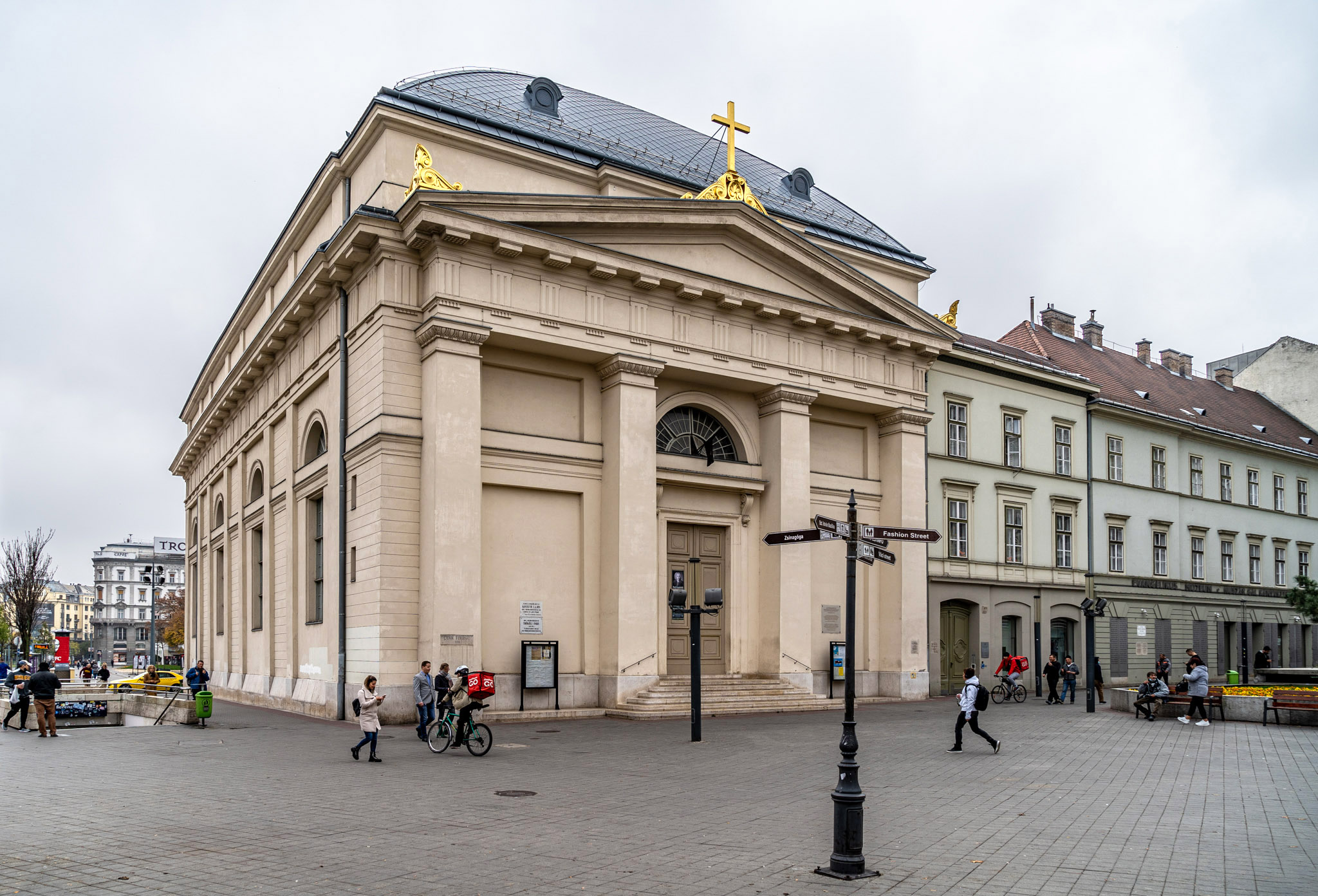
The church today. Lacking a tower, the bell is hidden behind the semicircular window above the entrance (Photo: Both Balázs/pestbuda.hu)
The first Lutheran Church in Budapest was built between 1799 and 1811 and still plays a central role in their religious life. János Krausz drew up the original plans, but as he died during construction, his son, the 25-year-old Mihály Pollack took over, and the final form reflects his ideas. József Hild added the current columned facade in 1856. A small bell tower once stood above the main entrance to the gate but was torn down in 1875 as it was unstable. While bells can be heard from behind the semicircular window on the main facade, modern technology could enable the reconstruction of the whole tower.
6. A Mansard roof with five towers: 3/a Károly Boulevard
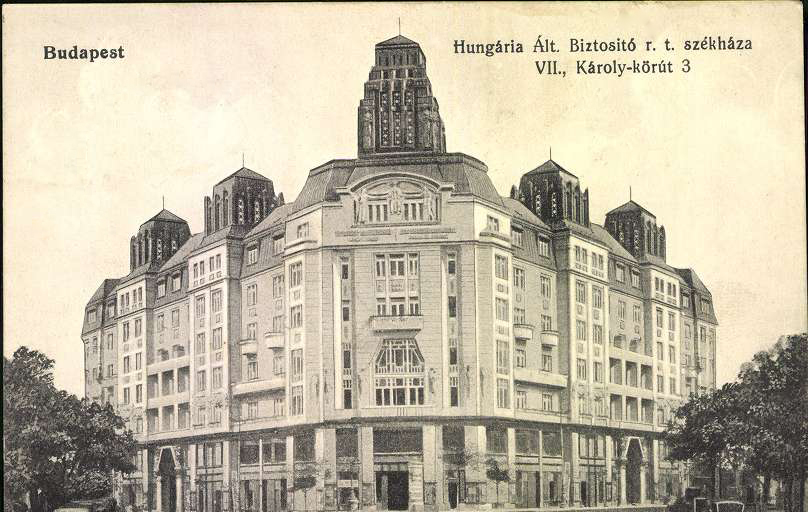
3/a Károly Boulevard with its original mansard roof and towers (Source: contemporary postcard)
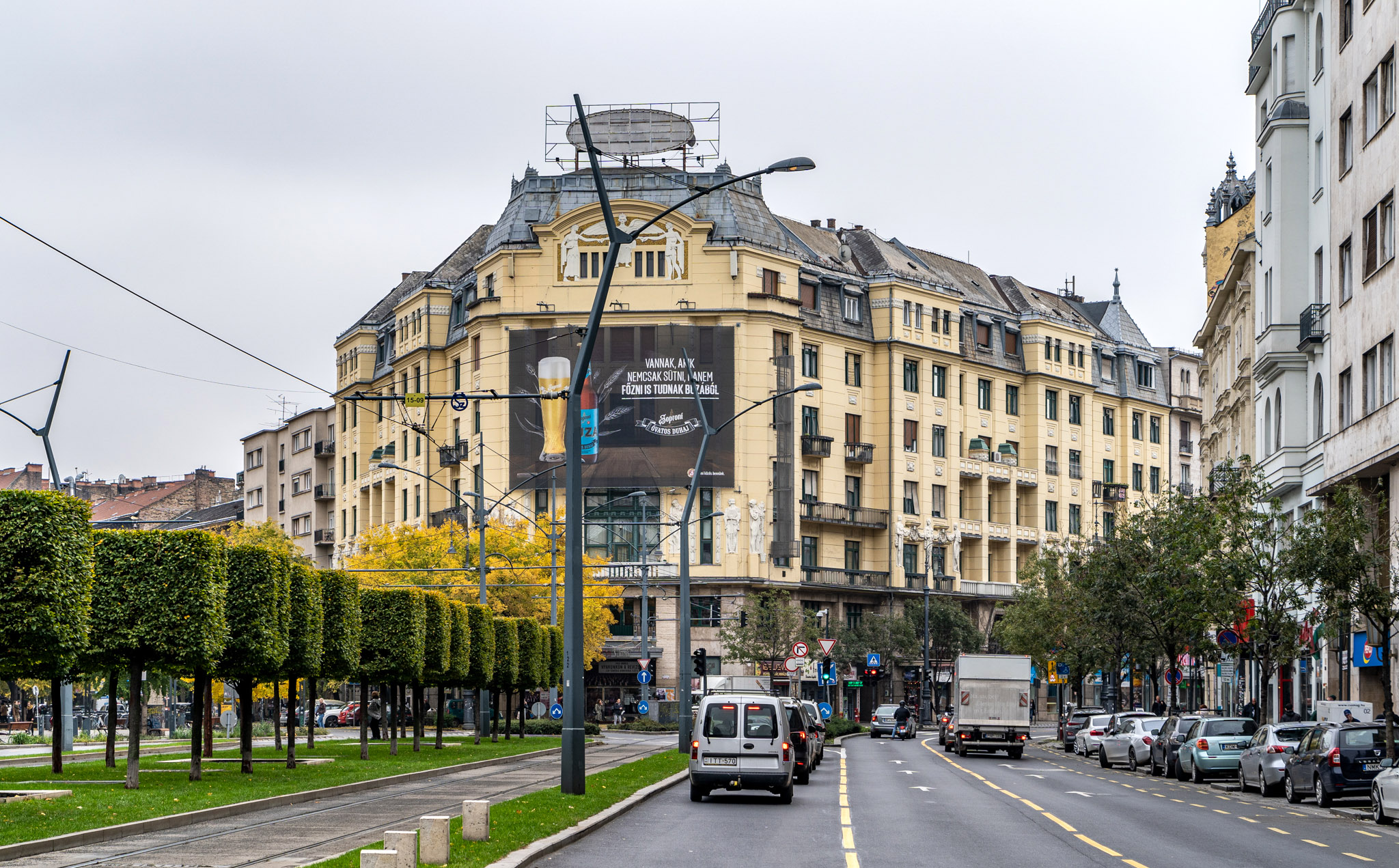
The majority of the roof survived the bombing raids of World War II, only to be torn down in the 1950s (Photo: Balázs Both/pestbuda.hu)
The massive building of 3/a Károly Boulevard is a cornerstone of the Budapest cityscape. Standing on the corner of Dohány Street and the inner ring road, the three-courtyard building can be seen clearly from over 500 metres away. Most will recognise it as the home of Filmmúzeum ('film museum)', and later Belvárosi Theater. Guidó Hoepfner and Géza Györgyi designed the building for the First Military Insurance Company, and it was built between 1911 and 1913. Four smaller and a single larger tower decorated the original mansard roof of the art nouveau building. While all but the largest tower survived the war, the roof structure was simplified in the 1950s.
7. A worthy end to Széna Square
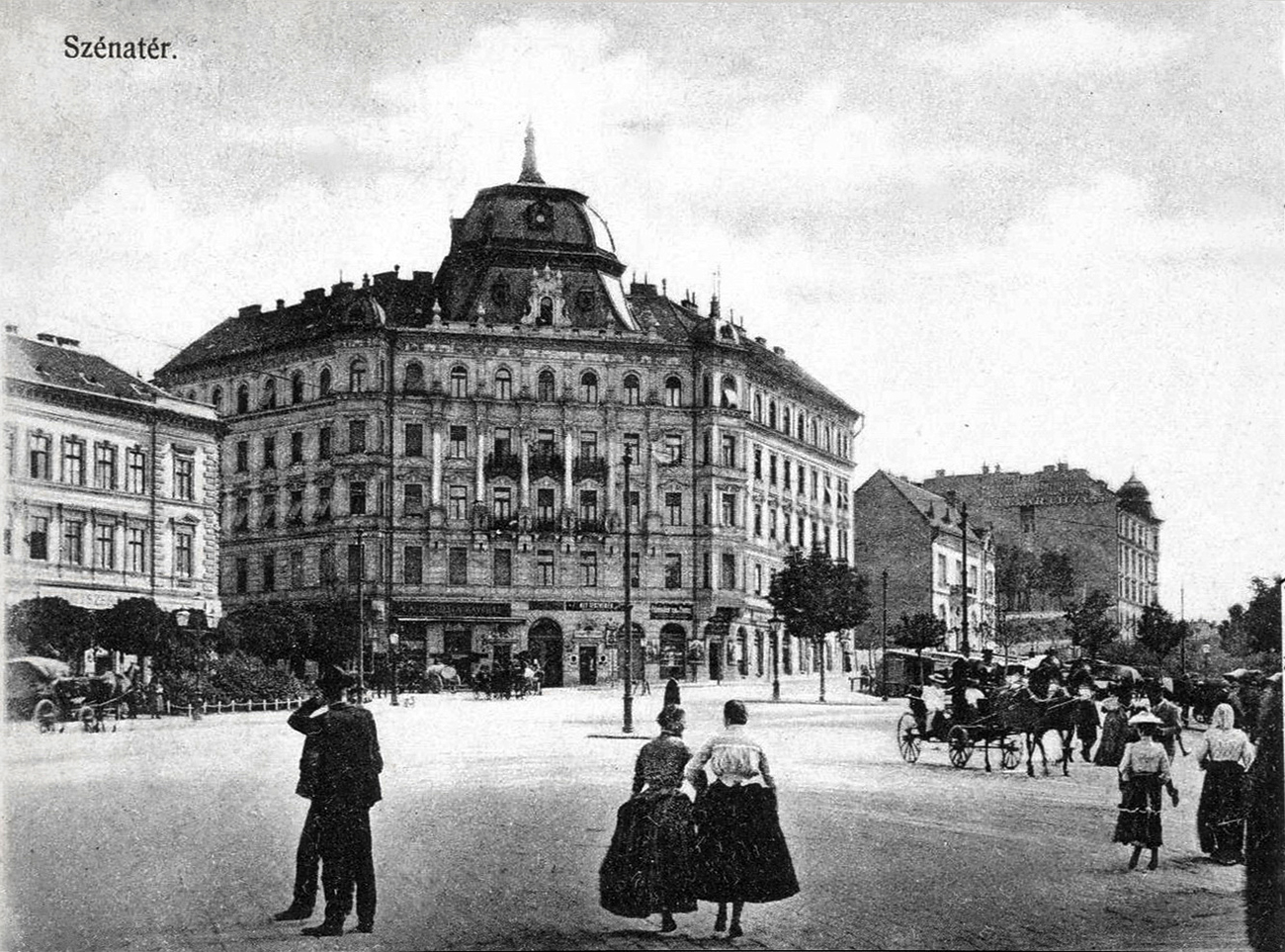
The dome of 7 Széna Square was demolished due to instability before the second world war (Source: contemporary postcard)
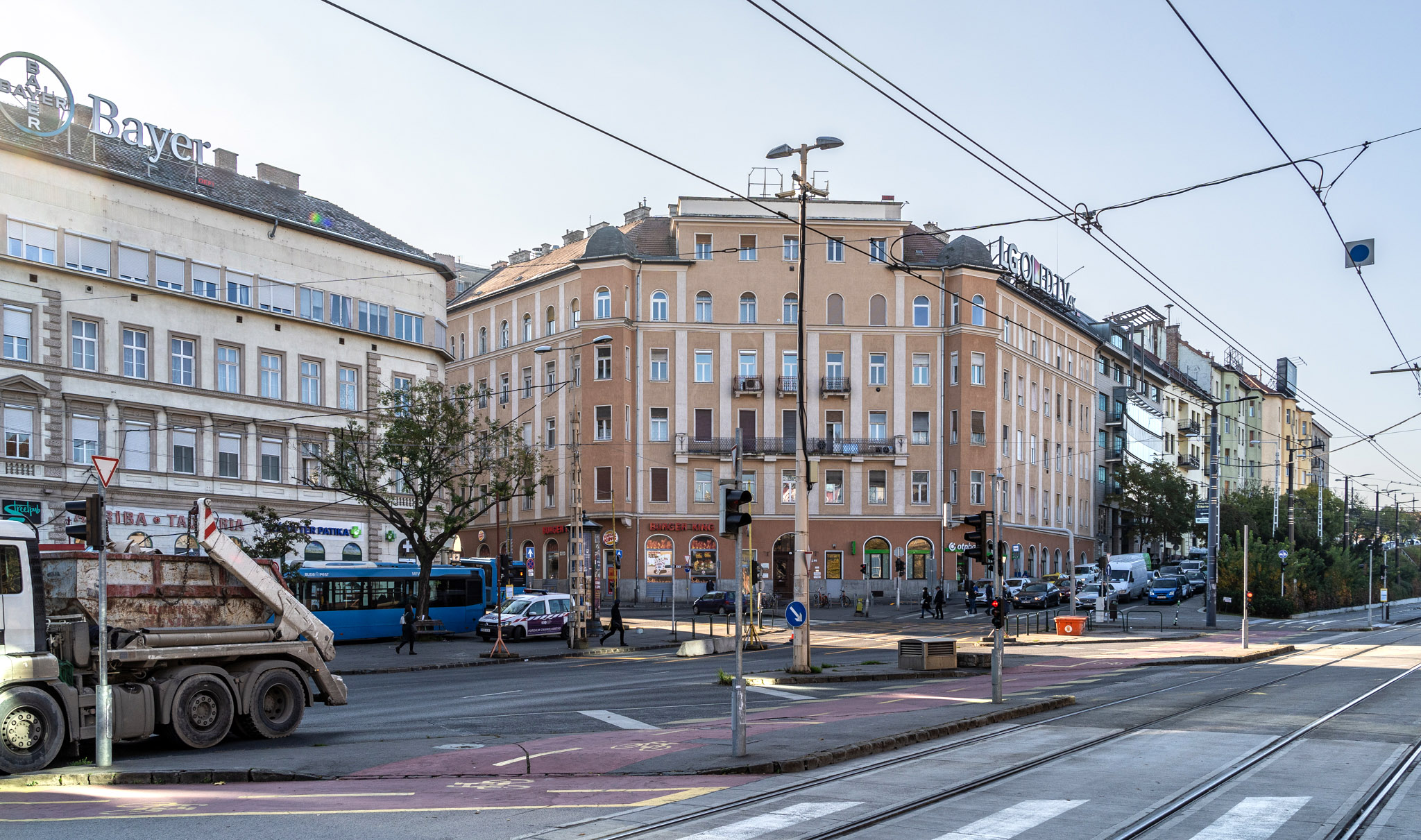
The facade was simplified after the war. The dome was never rebuilt (Photo: Balázs Both/pestbuda.hu)
little is known about the residential building on 7 Széna Square. János Luschmann probably designed for the Ministry of Finance around 1900. The original facade facing Széna Square was once adorned with a large dome. However, the structure was removed before the war. The building was damaged in the fighting, and only a simper facade was rebuilt.
8. The original dome instead of an observatory
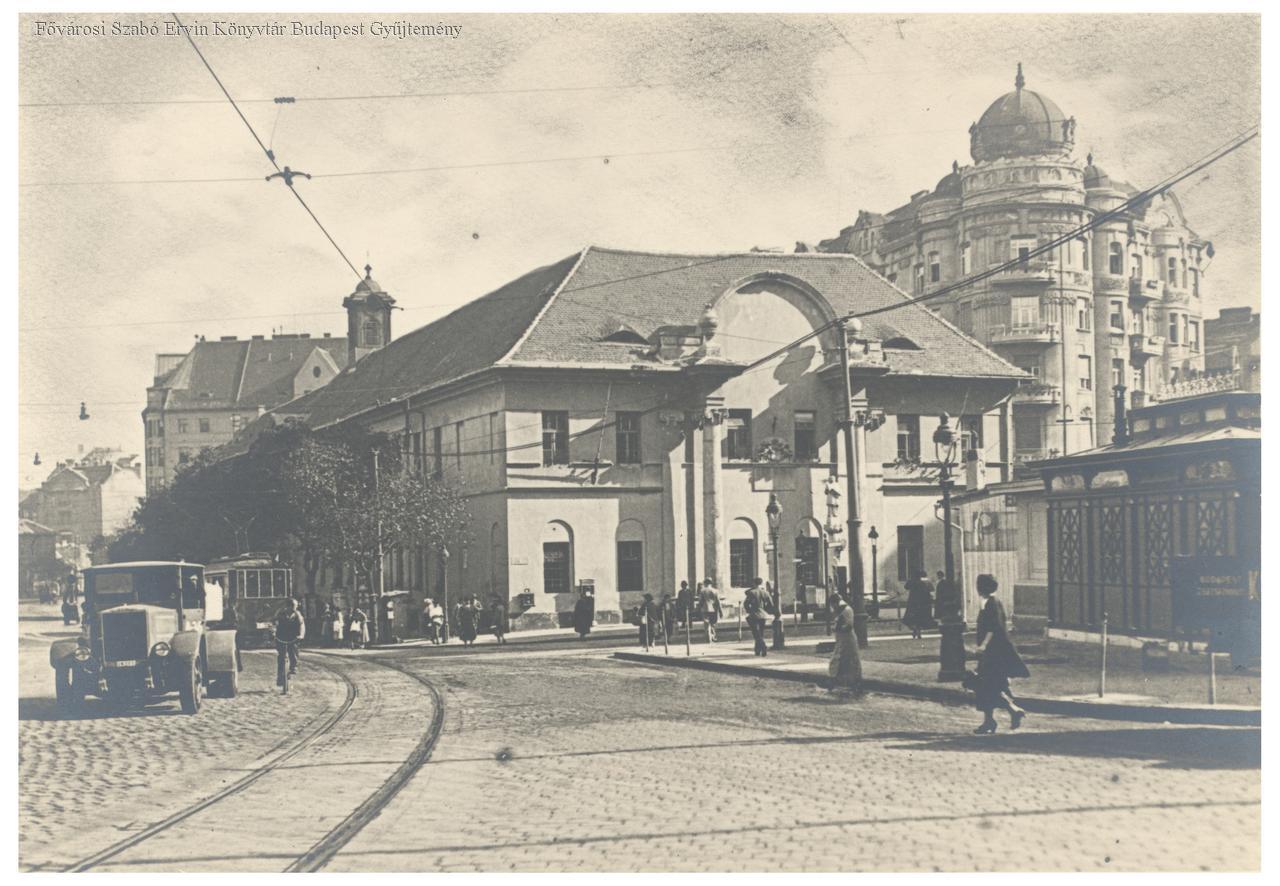
The house can be seen on the right side of the image taken in 1935 with its dome and ornaments. The old Saint John's Hospital is still standing at the time; it was demolished in 1949 (Source: FSZEK Budapest Collection)
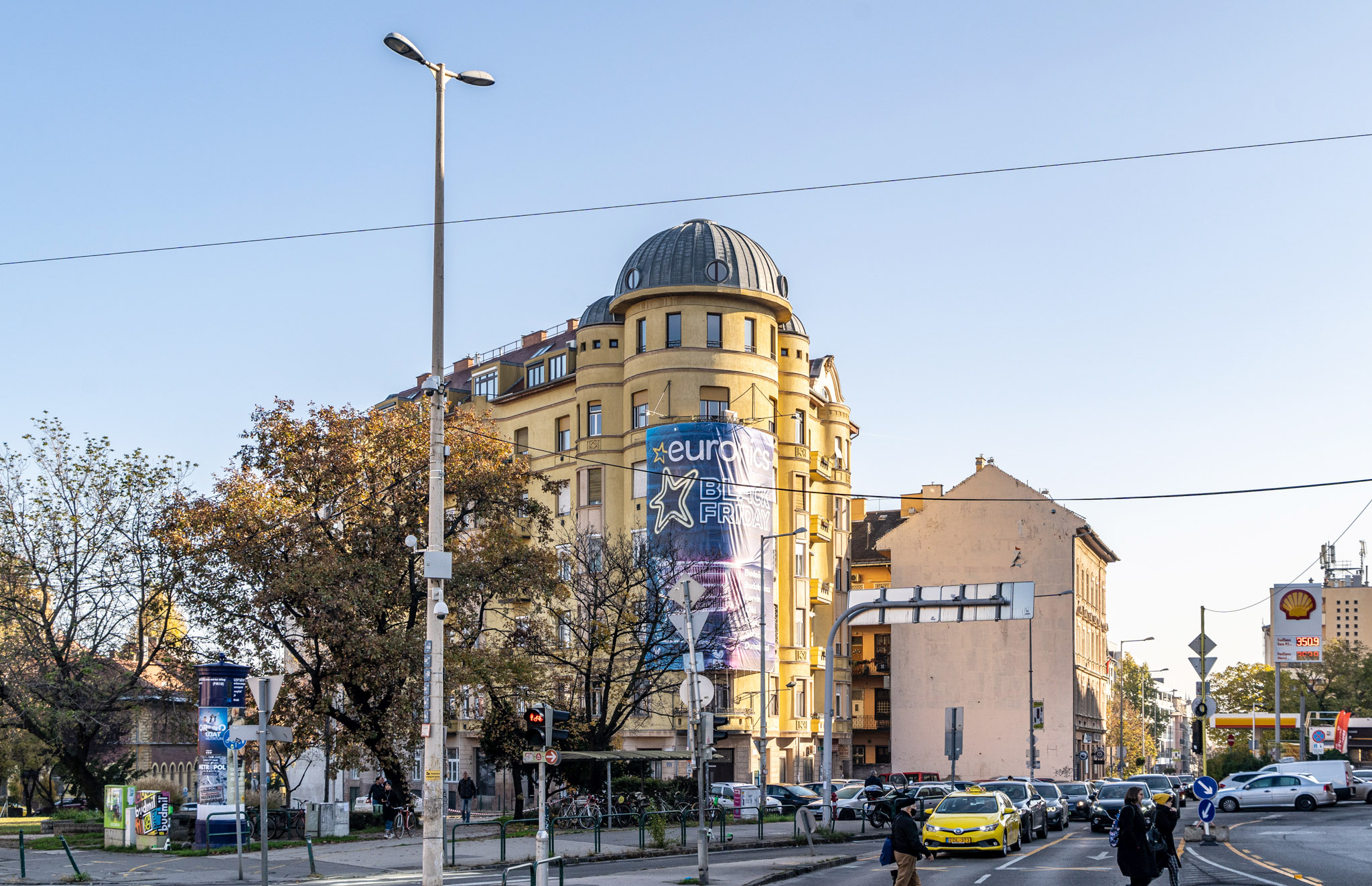
A renovation in the 2000s changed the shape of the dome, while the original was probably better (Photo: Balázs Both/pestbuda.hu)
The strange dome, more reminiscent of an observatory or the cap of a mushroom on top of 55 Csalogány Street will probably have been noticed by many who have visited the area. Sándor Baumgarten designed the house built in 1913. After it suffered damage in World War II, the dome was demolished and only rebuilt in the 2000s, in altered form. The original may have been more fitting to the building.
9. Illuminated glass ball above Szervita Square
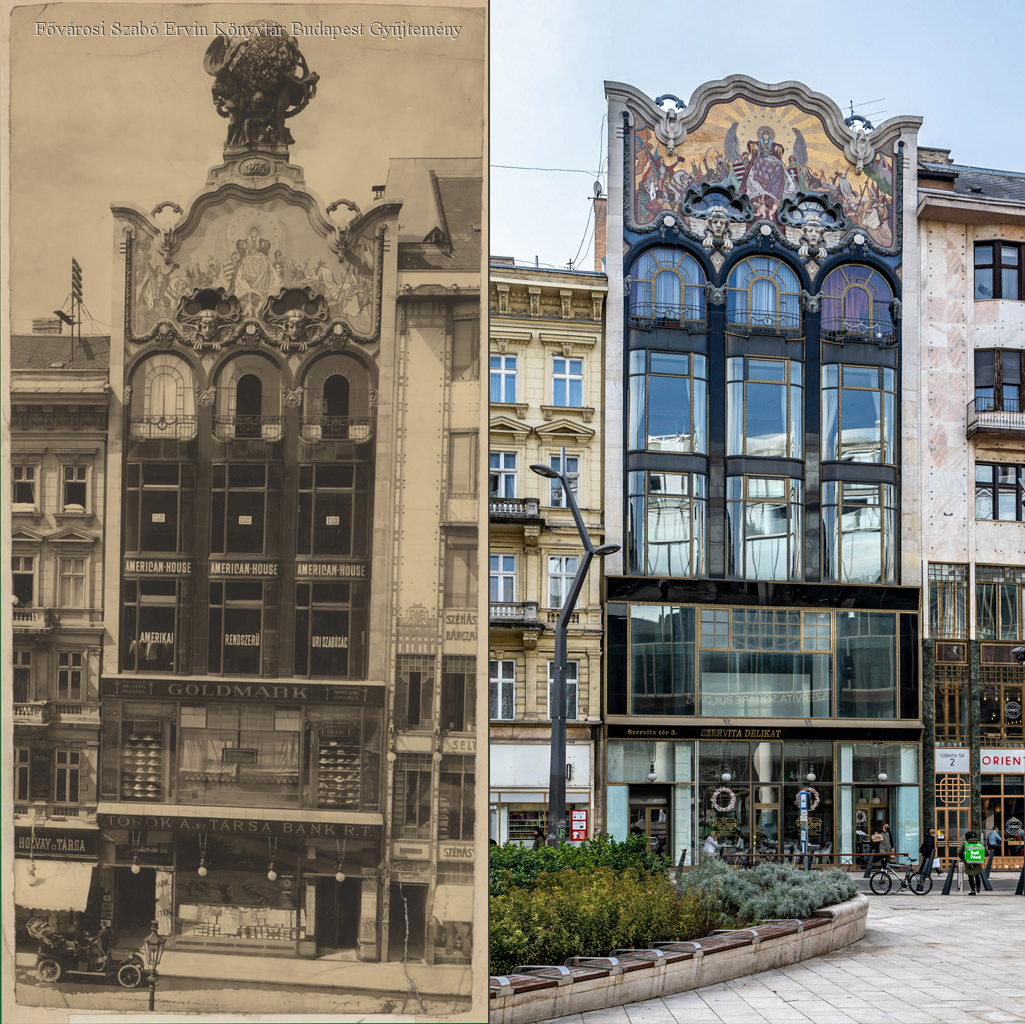
The Atlas statue holding a glass ball on top of the Török Bank on Szervita Square was a sight to behold (Photo: Archive, FSZEK Budapest Collection, present-day: Balázs Both/pestbuda.hu)
Henrik Böhm and Ármin Hegedűs planned the art nouveau residential building completed in 1906, for the Török és Társa bank. At the time, the reinforced concrete frame and glass structure was extremely modern. The glass mosaic by Miksa Róth, Hungária Glorified is its most striking detail. However, the top of the building was once decorated with a massive Atlas group statue which supported a 5-metre-diameter globe, by Simon Ney. a man an a women stood alongside the mythological figure, and the globe could be illuminated from the inside. However, the lavish ornament was removed in the 1930s, when it became unstable.
10. The home of Puskin Cinema deserves its original beauty
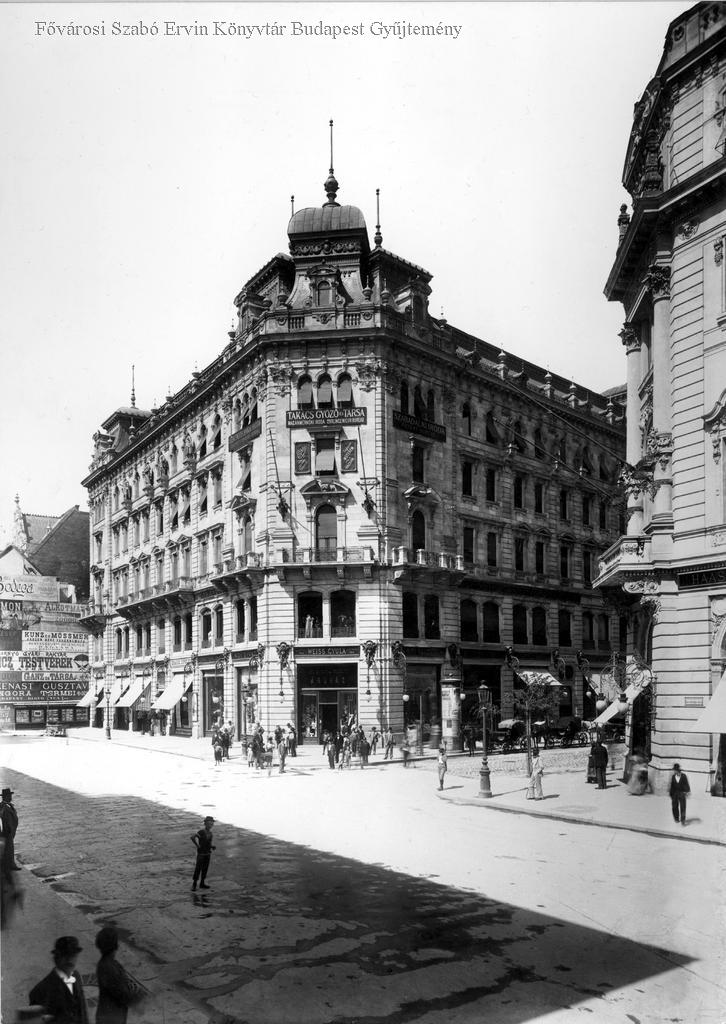
18 Kossuth Lajos, later the Puskin Cinema, photographed by Görgy Klösz around 1896 (Source: FSZEK Budapest Collection)
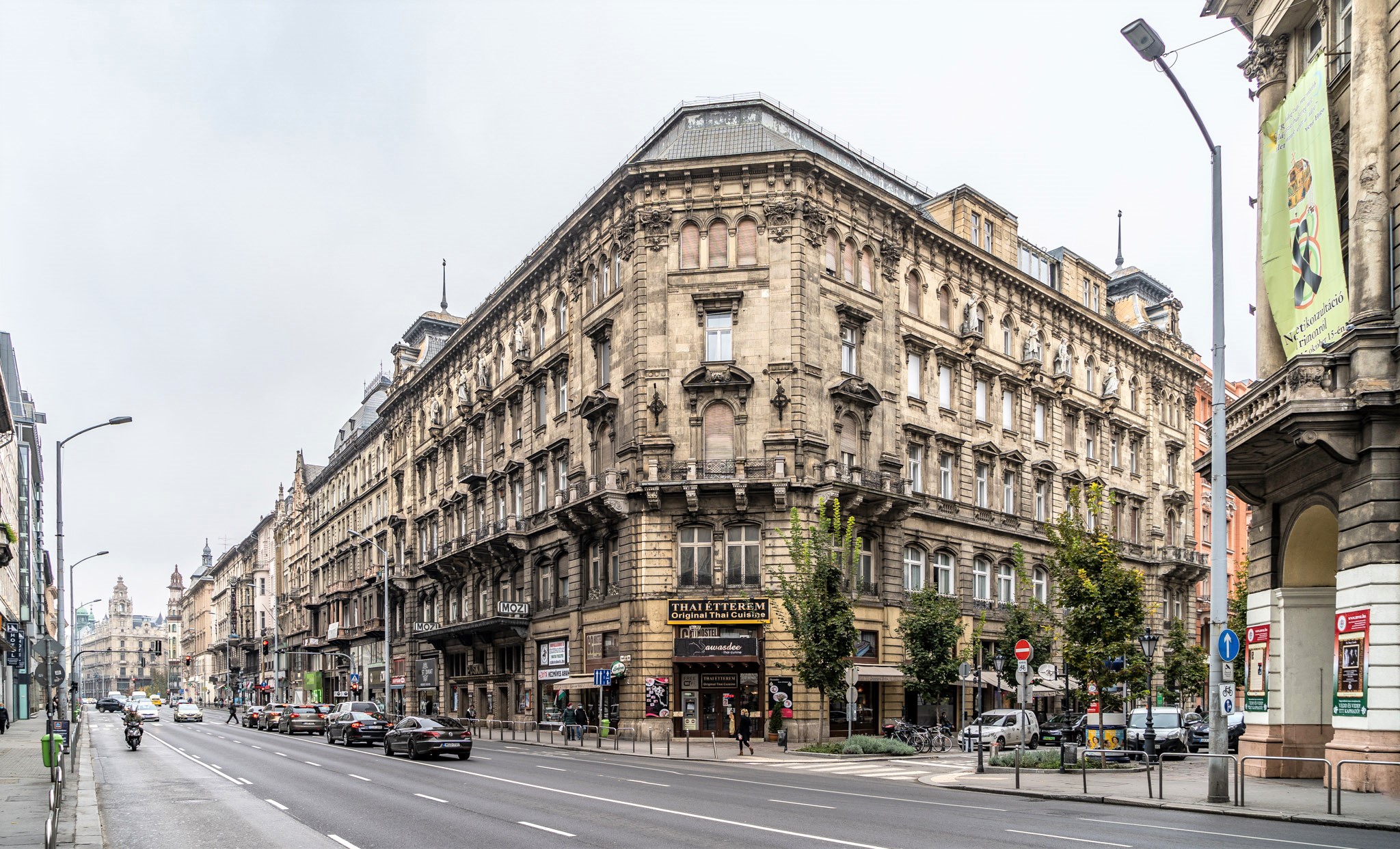
The roof of the house is less ornate today. The large corner dome is also missing (Photo: Balázs Both/pestbuda.hu)
The four-storey residential building completed in 1895 following a design by Győző Czigler, has become synonymous with the Puskin Cinema for most residents of Budapest. The cinema at 18 Kossuth Lajos Street was named after the Russian poet and writer, Alexander Pushkin on 1949. It had operated as Fórum since 1927, opened in what was once the Magyar világ ('Hungarian world') café. Earlier, the space had served as the photographer, Mór Erdélyi's studio. The house could be a jewel of the urban highway that has become of Kossuth Lajos Street if renovated, and its dome restored.
We hope that the reconstruction of the ornaments, towers and domes listed above may serve as the beginning of a new era. Naturally, several problems may arise, caused by loft conversions, floors added, etc. Nevertheless, the task at hand is crucial, as several other buildings around Budapest have been waiting for a true reconstruction for decades. PestBuda will continue to showcase these in the future.
Cover photo: Andrássy Avenue, Fonciére Palace to the left, 1930 (Photo: FSZEK Budapest Collection)

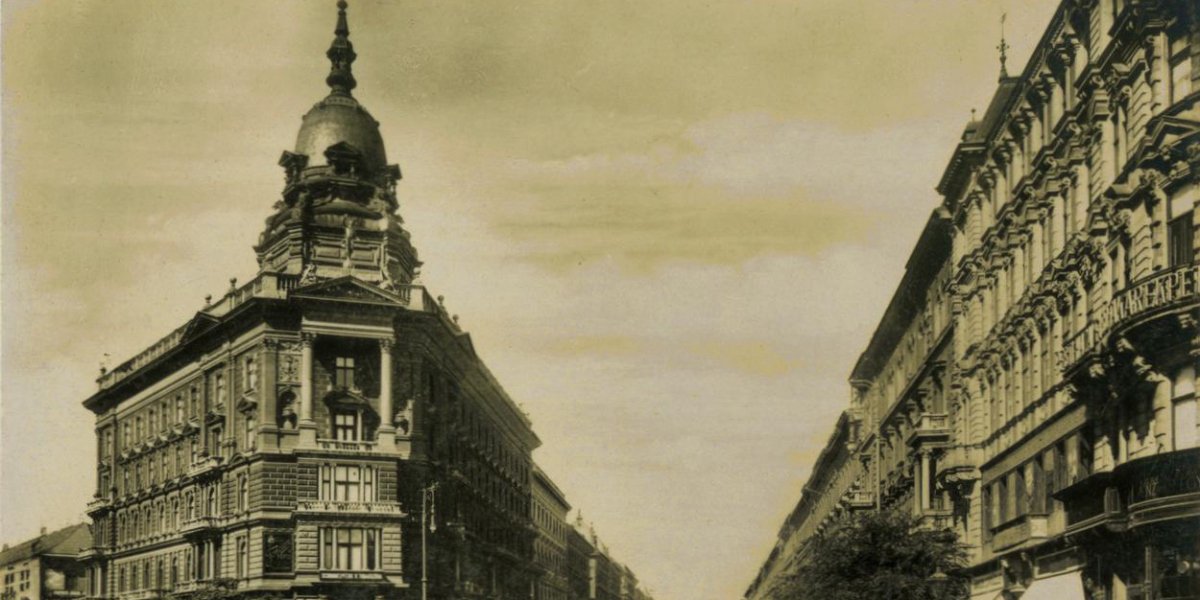



































Hozzászólások
Log in or register to comment!
Login Registration